Are Leaders Responsible for Motivating Team Members?
in Leadership, Motivation/by Darren BradyTeam leaders have a lot of responsibilities placed on their shoulders. They are the ones who are tasked with making sure a team works well and gets their goals accomplished. Many things are involved in that process, but is the task of motivating team members a part of a leader’s role? Or, is it something that the individuals themselves are responsible for? What do you think?
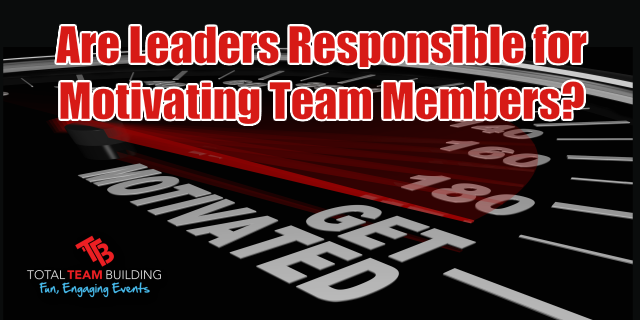
Before we answer that, lets start by defining what motivation is.
WHAT IS MOTIVATION?
The dictionary definition of motivation is “the act or an instance of motivating, or providing with a reason to act in a certain way”. What this means in simpler terms is that motivation is a force which causes someone to do something specific. It can be negative or positive.
Negative motivators are circumstances where something bad will happen if the person does not act in a specific way or accomplish something specific. Positive motivators are the opposite, where something beneficial will happen if the person does a certain thing.
Motivation comes in different forms for everyone. There is a high likelihood that everyone on a team is motivated by a different force to get their work done.
CAN LEADERS ACTUALLY MOTIVATE PEOPLE?
This brings us to an interesting place in the discussion. Are leaders actually capable of motivating people on their teams? There are differing opinions on this subject, but the most convincing argument is this: leaders cannot motivate team members. “All motivation is self motivation” is a common phrase passed around that proves true over and over again. The nature of motivation means that no one can actually make another person motivated.
HOWEVER, leaders aren’t off the hook just yet. Although a leader isn’t able to directly motivate someone, they can create the circumstances and the working environment that will promote self-motivation.
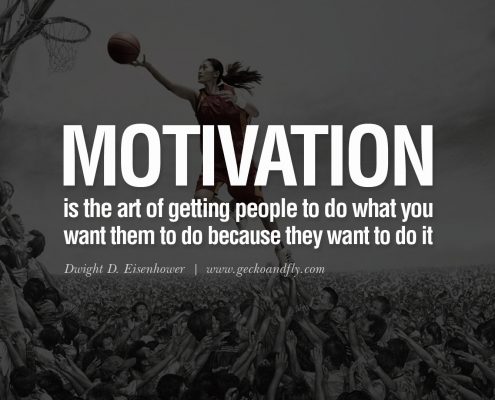
CREATING A MOTIVATING ENVIRONMENT
How can a leader create a teamwork environment that will be motivating to team members? Here are the things that are necessary if employees are going to get motivated:
1. Clear Goals
Without a clear end goal in mind, no team members will be able to become motivated. The only reason that people can work together is if they know they are all working to get somewhere. If there isn’t a clear and visible goal in sight for the team, there will be no cohesion and no motivation to work as a proper team.
2. Individually Understood Roles
Teammates need to know that they all have their own individual roles in the same team if they’re going to be working together. Roles that are ambiguous and unclear can be thought of as unnecessary. Employees cannot feel motivated if they don’t believe they are contributing to the team as a whole.
3. Build Better Relationships And Get To Know Them Better
Having a deeper understanding of how someone thinks and a better insight into that person and their background is key to creating a motivating environment. Knowing whether an individual is more inclined to be motivated by positive or negative motivators allows a leader to tailor his or her approach to get the best out of that individual.
4. Proper Compensation
Motivation isn’t only compensation, but without compensation that’s adequate it will be difficult for employees to feel like they are getting what they deserve for a job well done. If the compensation is not equal to the work being done, motivation will be hard to find.
5. Respect
Respect should be shown not only between employees and team leaders, but everyone on the team. This means that all team members should be showing each other respect. If a culture of respect isn’t present in your team and team members treat each other poorly they will start to lose all their motivation.
6. Create A Fun, Happy & Positive Culture
Create an environment where employees love coming to work because they enjoy the fun, happy and positive culture. Regular team building and social get-togethers will allow staff to bond on more of a personal level, thus creating deeper and more meaningful and positive working relationships.
In Summary
Individual motivation is not the direct responsibility of a leader, but creating an environment in which employees can become motivated is absolutely part of being a leader.
Team Building helps build better teams!
Total Team Building specialise in teams…we facilitate a range of team building activities that help build team morale, trust, leadership & communication within a team. For more information about how Total Team Building can help you contact us today.
How To Engage The Millennials Of The Future Through Team Building
in Culture Change, Motivation/by Darren BradyThey’re outspoken, tech-savvy, entitled and taking over the global workforce. Experts predict that by 2020, Millennials (Gen Y) will account for 50% of international workers and 75% by 2025.
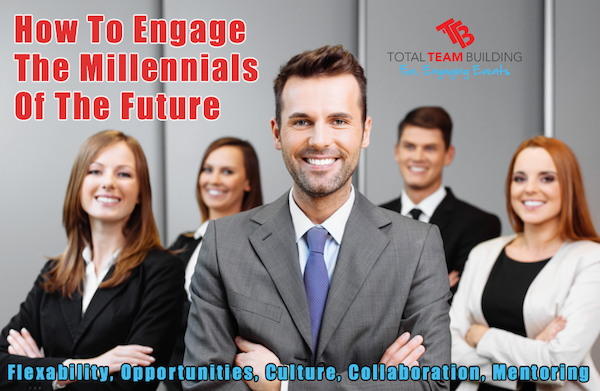
Globally, organisations are struggling to attract and retain Millennials, who tend to switch jobs every two years. This highly talented pool of workers needs to be engaged, motivated and fully connected. Inspiring this generation in the workplace with innovative team building is one way to retain top talent.
But first, it’s critical to understand what makes Millennials so unique.

Named by Time Magazine as the “Me Me Me Generation,” this group of workers is more distracted, demanding and entitled from generations before. These emerging professionals are also collaborative, tech-savvy, entrepreneurial and looking to reform businesses.
In a recent millennial’s survey conducted by Deloitte, it was concluded that apart from income, five key areas influenced a millennials choice of employer. These were
- Work-Life Balance
- Workplace Flexibility – working from home and flexible hours
- Opportunities to Progress / Leadership Opportunities
- Professional Development & Training Programs
- Sense of Meaning & Connection from work
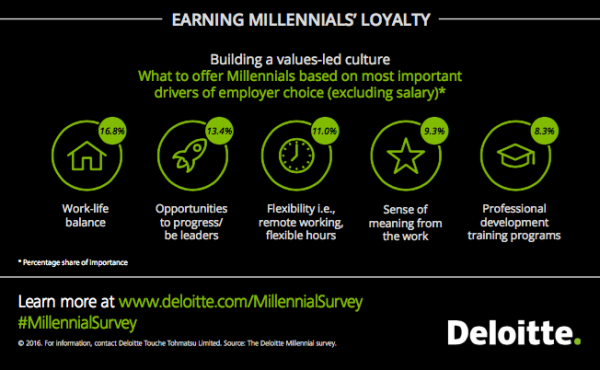
Source: The Deloitte Millennial survey. http://www.deloitte.com/MillennialSurvey
When you engage these workers through a values-led culture they will be more likely to be committed to your organisation’s goals as previous generations.
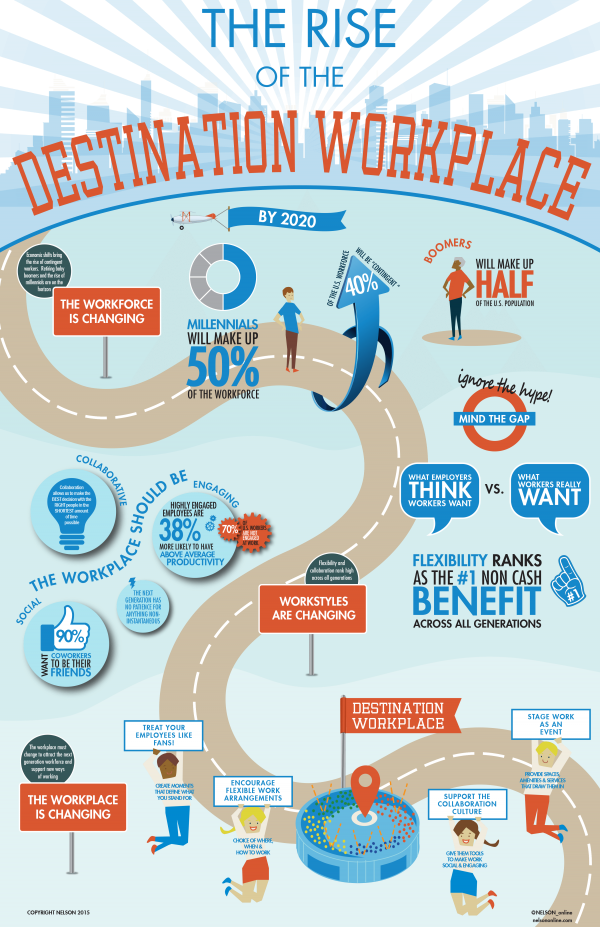
Infographic from Nelson
Embracing Generational Diversity with Team Building
By creating a cohesive environment that embraces generational differences, you’ll be able to maximise the value of organisational performance with a team of workers who balance experience and innovation.
Charity Team Building
Millennials are very globally conscious and want to know their work is contributing to the social well being of the community, or a cause. Engaging Millennials with collaborative volunteer or charity events helps increase their sense of unity and lets them feel they are contributing to a better good.
Cross-Generational Mentoring
Create mentorship programs between office Baby Boomers and younger workers. Institutional knowledge and experience will add a new dimension to the innovative minds of the youngsters, who in turn will boost performance of the oldster with some tech-savvy thinking.
A Harvard Business Review article, Managing People from 5 Generations, says that partnering older workers with younger ones to execute specific projects is becoming more common in the workplace.
“The younger person — who grew up with the internet — teaches the older person about the power of social media to drive business results,” Jeanne Meister, co-author of The 2020 Worplace: How Innovative Companies Attract, Develop and Keep Tomorrow’s Employees Today, tells HBR. “…Mixed-age work teams are another way to promote cross-generational mentoring. “Studies show that colleagues learn more from each other than they do from formal training, which is why it is so important to establish a culture of coaching across age groups.”
Diverse perspectives from all generations will allow for new solutions to old problems or increased innovation with traditional practices to maximise that community feeling in an organisation.
Collaboration
Millennials are inspired by connectivity – be it peer-to-peer or through social media. They need to work together, with a clearly stated goal. Millennials are very social and perhaps more group-oriented than previous generations. Most of their experiences, educational or social, have revolved around groups, whether it be interactive video games with a worldwide audience, group sports or simply connecting with friends on social media. Use a virtual and physical collaborative approach to create buzz among all generations in the organisation.
Experiential Events
Boring boardroom training events will not inspire this generation that loves to experience! Gen Y tends to easily bore so if team building involves a meeting room, make sure it is interactive and allows competition. Encourage skill development and foster learning by immersing this group of people with programs that allow them to personally connect their contributions to the community. Experiential programs provide an environment where individuals apply knowledge and conceptual understanding to problem solving.
It’s also critical every leader understands that their organisation will employ varying personalities, despite generational stereotypes. For a truly successful business with engaged workers, always make sure you consider the motivating factors of each individual worker.
If your looking to motivate your staff or would like to create a values led culture, Give Total Team Building A Call. We will tailor our programs specifically to the individual needs of your organisation. Let us design a unique program that taps into the key motivators of your workforce with a fun, engaging team building event.
SOURCES:
- The 2020 Workplace, Jeanne Meister; Forbes: http://www.forbes.com/sites/rawnshah/2011/04/20/working-with-five-generations-in-the-workplace/#72ebc595759f
- http://www.dummies.com/how-to/content/motivate-millennials-with-social-interaction.html
- HBR: Managing People from 5 Different Generations: https://hbr.org/2014/09/managing-people-from-5-generations
Employee Engagement The Key To Happiness And Organisational Performance.
in Culture Change, Motivation, Team Building/by Darren BradyThere’s a good reason Google received almost 1.3 million applications from people hoping to gain employment with the tech giant.
Google’s philosophy is to “create the happiest, most productive workplace in the world,” company spokesman Jordan Newman told the New York Times.
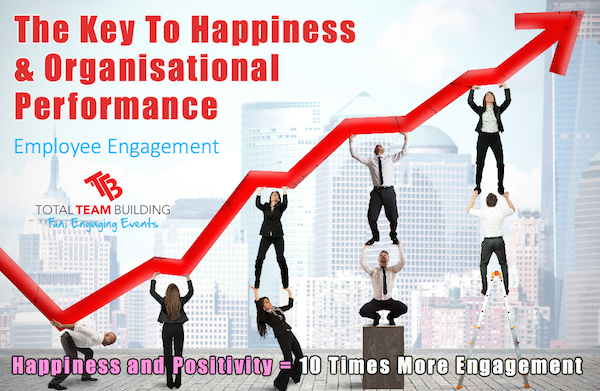
For the sixth consecutive year, Google leads the pack as number one on Fortune’s list, the 100 Best Companies to Work For.
Beyond the bounty of perks offered to Googlers, it’s a happy environment that ignites creativity, cultivates innovation, and most importantly, boosts productivity.
Teams are the foundation of its success and the Internet juggernaut spares no expense at keeping its employees happy. It even has a People Operations department with experts whose jobs are to ensure employees stay happy and engaged.
Team building is part of Google’s culture. Having fun together fosters a sense of unity and among employees and creates that engaging environment that people enjoy.
Engaged workplaces are more profitable, have positive customer feedback and a higher rate of employee retention.
Happiness = Success
In a comprehensive analysis of 225 studies, researchers Sonja Lyubomirsky, Laura King, and Ed Diener found a strong connection between happiness and success. The research that combines neuroscience, management studies and the bottom lines of international organizations shows that happiness and positivity in the workplace results in:
- 3 times more creativity
- 31% more productivity
- 10 times more engagement
“People who cultivate a positive mind-set perform better in the face of challenge. I call this the “happiness advantage”—every business outcome shows improvement when the brain is positive,” Shawn Achor, best selling author and psychologist, writes in Positive Intelligence, published in the Harvard Business Review (HBR).
Engaged employees are psychologically invested in the organization and care about its overall success. Disengaged employees just don’t care.
The cost of disengagement can cripple an organization’s level of performance. According to Gallup, How to Tackle U.S. Employees’ Stagnating Engagement, actively disengaged people cost the American economy up to $550 billion per year in lost productivity.
It’s not that surprising.
In a lifetime, people spend an average of 90,000 hours at work – that’s almost 11 years of continuous days in an office. Crestfallen workers, trapped in an unhappy environment, are more likely to produce disappointing results.
Creating that positive work environment that engages employees is key to happiness and organizational performance.
Team building is a great way to maximize employee engagement. If co-workers recognize each other’s strengths and learn to collaborate as a team to reach an equal goal, chances are they will feel more connected and communicate more effectively.
A 2010 study in the International Journal of Business Management shows that employee engagement is mostly found in high growth companies.
The study, Employee Engagement, the Key to Improving Performance, reports a: “positive relationship between employee engagement and organizational performance outcomes: employee retention, productivity, profitability, customer loyalty and safety. Research also indicates that the more engaged employees are, the more likely their employer is to exceed the industry average in its revenue growth.”
Google, a dominant force in the tech industry, is proof. The brand is less than 20 years old and generates more than $45 billion annually.
Perhaps you remember the following story that clearly demonstrates the Google culture: building teams with highly-engaged people who are fully committed to the company’s overall performance and growth.
In 2002, co-founder Larry Page is famously known for posting a printout of results from Google AdWords in a kitchen at Google that said: “THESE ADS SUCK.”
Instead of blasting, reprimanding or firing the AdWords team, Page had full confidence that the talented team would correct the problem.
The HBR writes in The Google Way of Attacking Problems: “In most companies, this would be seen as cruel — an arrogant executive publicly humiliating his hapless employees for shoddy work — but not at Google. In fact, his unusual act was a show of confidence, defining a tough problem that he knew his talented engineers would want to solve.”
Page was right. He understood his employees and knew how to motivate innovation. By Monday morning, “a group of engineers sent out an email with a solution that not only resolved the AdWords problem, but helped transform Google into a major money machine,” HBR writes.
Motivate Your Team
Is your company looking to create that environment that boosts engagement, promotes innovation and maximizes productivity? Discover the internal motivators of your team and understand how their values align with the overall goals of your organization.

33 Easy Ways to Motivate Your Creative Employees
If your looking to motivate your staff or would like them to be more actively engaged so they connect, communicate and collaborate then let us design a unique program that taps into the key motivators of your workforce with fun, engaging team building events. Give Total Team Building A Call Today.
Sources
- Fortune Magazine, 100 Best Companies to Work For: http://fortune.com/best-companies/google-1/
- Google People Operations: http://www.google.com/about/careers/teams/people-operations/
- Success with Five Positivity Habits: http://executiveeducation.wharton.upenn.edu/thought-leadership/wharton-at-work/2014/03/positivity-habits
- HBR, Shawn Achor: https://hbr.org/2012/01/positive-intelligence
- Gallup, How to Tackle U.S. Stagnating Employee Engagement: http://www.gallup.com/businessjournal/162953/tackle-employees-stagnating-engagement.aspx
- International Journal of Business Management, Employee Engagement, the Key to Improving Performance: http://www.ccsenet.org/journal/index.php/ijbm/article/viewFile/6745/6332
- Harvard Business Review, The Google Way of Attacking Problems: https://hbr.org/2014/12/the-google-way-of-attacking-problems
- New York Times, Jordan Newman quote: http://www.nytimes.com/2013/03/16/business/at-google-a-place-to-work-and-play.html?_r=0
- 33 easy ways to motivate your creative employees: http://www.companyfolders.com/blog/best-ways-to-motivate-employees
